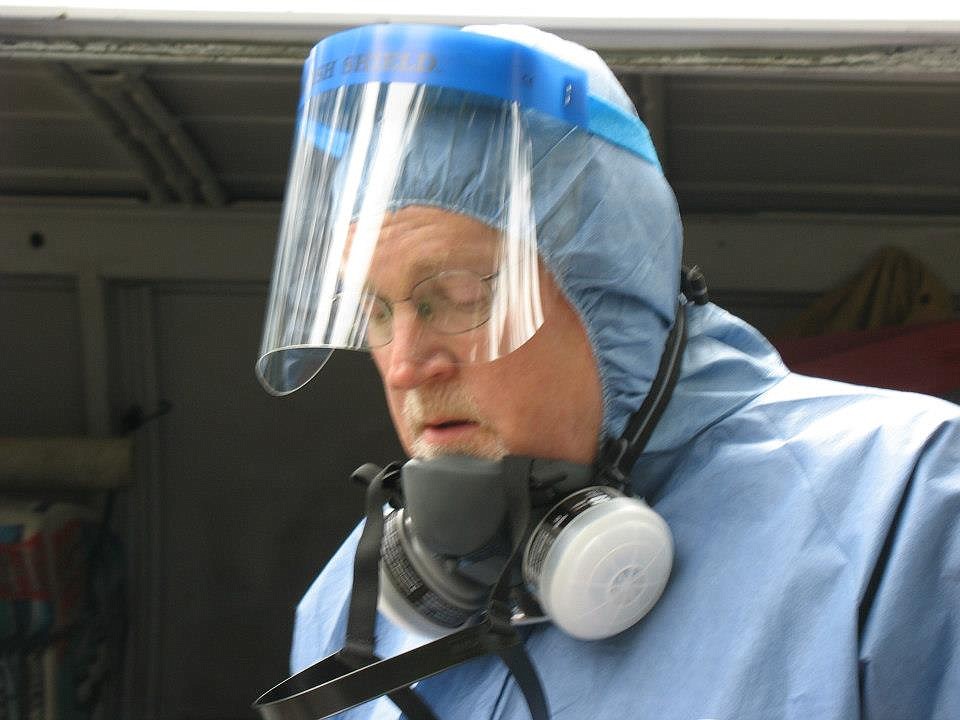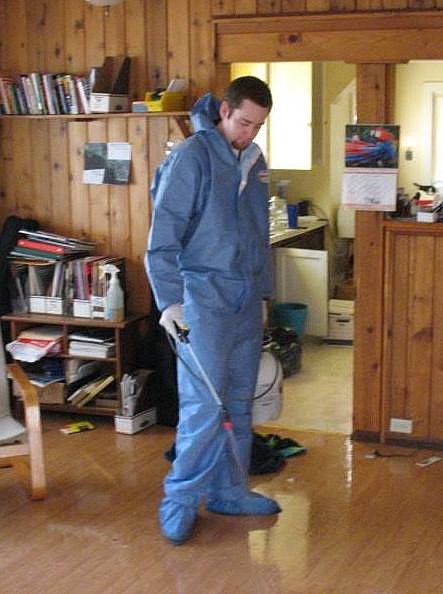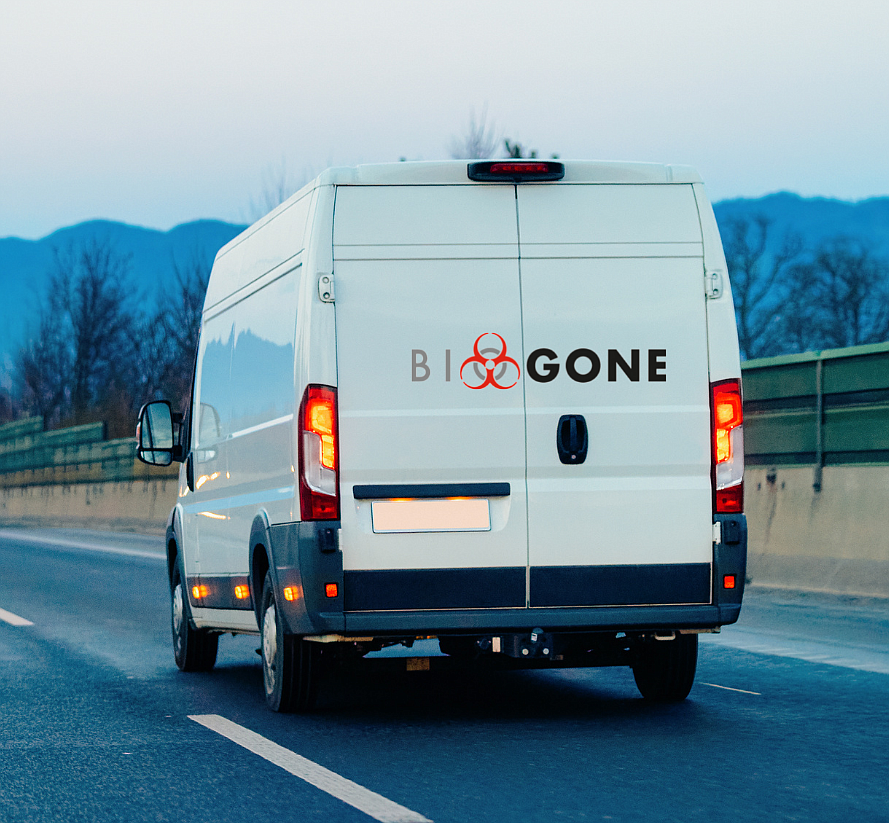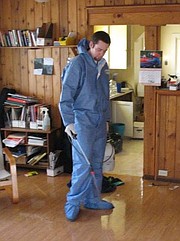Crime-scene cleanup comes with compassionate touch
COEUR d’ALENE — The news is full of unsavory stuff: graphic accidents, horrific crimes and heartbreaking suicides.
But rarely do most people have to confront the aftermath of those traumas. For Rick Bennett, owner of Biogone Biohazardous Clean-up & Removal, the scenes are a regular part of life.
Bennett has a strong constitution when dealing with death scenes, but it’s a job he also handles with sensitivity and compassion.
Personally taking every incoming call, Bennett’s first objective is listening with a “sympathetic ear” and understanding exactly what the situation is.
Frequently Bennett is called to suicides, homicides or unattended deaths. Biogone also handles hoarding cases, industrial accidents and the scenes of medical emergencies, he said.
Once he’s visited the location to determine what's required, he explains it to the client, assuring them that the scene will be properly handled.
“I know they want to get into the house, they need to get into the house," he said. "I’m trying to spare them the trauma that they’re going to see — I call it the ‘ugly stuff.’ I tell them look, I need the keys to the house. I’m going to go home, get our guys and our gear. We’ll be here tonight. Tomorrow morning, this will all be gone.
"You can literally see their countenance change. All of a sudden it’s just a relief that they know somebody’s going to take care of it.”
Typically, first responders or coroners refer Biogone, the only biohazard cleanup company within about 100 miles, with the level of certification and expertise of Bennett’s crew, he said.
“It’s better to know us and not need us than to need us and not know us,” Bennett said.
Sometimes, family members try cleaning up the scene themselves, which is extremely dangerous, Bennett said. The damage Biogone handles frequently involves removing body fluids.
“People don’t understand that body fluids can potentially contain many different types of diseases: hepatitis B and C, HIV, MRSA,” Bennett said. “Some of them are deadly, so you have to be really careful.”
Bennett’s crew begins by cleaning surfaces that are visible to the eye, eventually proceeding to examination on a microscopic level.
“That means cutting up carpet, that means pulling up a tile floor because (fluids) seeped down through the grout,” Bennett said. “Sometimes I’m having to cut out subfloors or pull up baseboards.”
Once that's done, contaminated materials are disposed of according to Environmental Protection Agency guidelines. Biohazardous materials can't be placed in the county dump, Bennett said.
Because of the nature of the traumas Biogone handles, often body fluids or tissues have “sprayed,” becoming affixed to walls, ceilings and personal belongings. The Biogone team examines these surfaces inch by inch, using a “special, high-powered light,” Bennett said.
“Now what we’re looking for is literally a pinpoint of blood. Something that would be really hard for you and I to see,” he said. “Even one little pinpoint of blood is enough to get somebody sick.”
Consider someone returning to the site with an infant, for example. The child may crawl around, touching things, and inevitably will place their hands in their mouth. If Biogone has missed so much as a pinpoint of bodily fluid, that baby could potentially contract hepatitis or something worse, Bennett said.
Bennett and his crew aren’t willing to take that chance.
“It’s just dangerous work that we do. We take it very seriously. One of the things that I worry about on every single one of our jobs is that I don’t want any of my guys or girls to come home with something,” he said. “We all want to come home safe.”
The site is stripped down, disinfected and sterilized with specialized chemicals.
Then technicians continue, cleaning the “hidden inches” of a home, Bennett said. Every cabinet and drawer, every nook and cranny are examined. When a scene is particularly bad or odors can’t be completely eliminated, the walls may have to be sealed with a paint that encapsulates them.
Bennett has a four-person, full-time crew and several part-time employees. He conducts all employee training personally.
Biogone is certified in specialty decontamination, bloodborne pathogens, respiratory protection, hazard communication, personal protective equipment, confined space awareness and other Occupational Safety and Health Administration certifications.
“We groom them little bit by little bit, teaching them why,” Bennett said. “It’s not important to just do the job correctly. They need to know why they’re doing the job and why it’s important to do it correctly.”
Technicians cover themselves head to toe in protective gear, guarding against both bodily fluids and the harsh chemicals that are required.
Another focus of employee training is the gentle handling of family members.
“I’m an extremely sensitive person. It’s important to me that these people are treated with compassion and understanding,” Bennett said. “It’s not easy being them at that moment in time.”
Actual biohazard cleanup isn’t even close to what's depicted on TV, Bennett said.
“Most people have no idea what a murder scene looks like, and it’s probably good they don’t,” Bennett said. “There is nothing typical about this job.”
Visit biogone.com for more information. Included on the site is a blog where Bennett shares information and experiences. Rick can be reached directly at rick@biogone.com or 208-704-4400.





